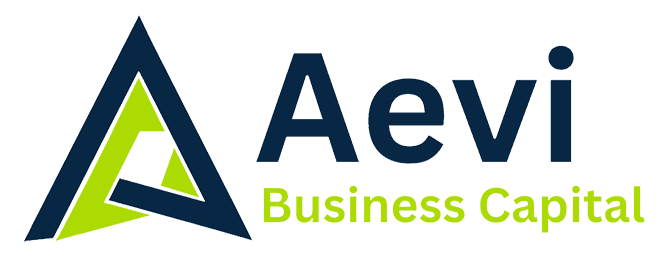Invoice factoring is a handy tool for businesses that need a quick boost in cash flow without diving into other traditional loan options. It’s a process where a company sells its unpaid invoices to a factoring company at a discount. This gives businesses immediate working capital instead of waiting for clients to pay up. Understanding how invoice factoring works can be a game changer for many businesses, especially when unexpected expenses arise.
Having flexible financing options is key for any business to thrive. Whether it’s covering payroll, purchasing supplies, or expanding operations, accessing funds promptly can keep things moving seamlessly. Invoice factoring stands out because it doesn’t add more debt to the balance sheet. Rather than borrowing money, businesses are tapping into funds they’ve already earned. The goal is to streamline access to funds, which is where a reliable finance company for business can make a difference. This method ensures that businesses remain operational, efficient, and ready to capitalize on growth opportunities.
Understanding Invoice Factoring
To get a firm grasp on invoice factoring, it’s important to first know its basics. At its core, invoice factoring involves selling unpaid invoices to a factoring company. This company gives the business a percentage of the invoice value upfront, usually around 70-90%. Later, once the invoices get paid by the customer, the company pays the remaining balance, minus a small fee. This allows businesses to quickly convert pending payments into usable cash.
This process works well for businesses facing long payment cycles or unpredictable cash flow. Industries that experience seasonal fluctuations, like retail or manufacturing, often benefit the most. Such businesses can remain productive without worrying about delayed payments. For instance, a clothing manufacturer might need to pay workers and buy more fabric even when store payments are pending. With invoice factoring, the manufacturer gets the cash flow needed to keep operations running smoothly.
The benefits of invoice factoring extend beyond just receiving cash quickly. For one, companies can avoid the hassle of chasing down clients for payments. Factoring companies often handle collections, which means more time for business owners to focus on core activities. It also provides a way to stabilize cash flow, making it easier to forecast and plan for the future. All in all, invoice factoring serves as a practical solution for maintaining liquidity and ensuring business continuity.
Steps to Get Loans for Invoice Factoring
To start with invoice factoring, you first need to evaluate your business requirements and see if you’re eligible. Look at your cash flow needs, the total amount of your outstanding invoices, and decide how much immediate funding you require. This initial evaluation helps you set clear goals and avoid acquiring more funds than needed, which could lead to unnecessary costs.
Once you know your needs, it’s time to find a reliable finance company to work with. Search for companies that specialize in invoice factoring, ones that have a solid reputation and are transparent about their fees and processes. It helps to check online reviews and ask for recommendations from peers in your industry.
After choosing a company, prepare your application and necessary documentation. Most places will want details about your business, including financial statements, a list of the invoices you’d like to factor, and information about your customers’ creditworthiness since their ability to pay impacts the process. Having this paperwork ready can make the application process smoother and quicker.
Advantages and Disadvantages of Invoice Factoring Loans
Invoice factoring can be a significant advantage for both small and large businesses. It ensures immediate access to cash, which can be crucial for maintaining daily operations. Whether you’re managing payroll or purchasing inventory, having readily available funds allows you to run your business without disruption.
Yet, there are potential drawbacks to weigh. Factoring involves fees, which may add up over time, especially if you frequently factor invoices. Additionally, certain businesses might view outsourcing collections as a downside, preferring to maintain direct relationships with their customers.
Situations where invoice factoring shines the brightest include businesses facing seasonal sales variations or those expanding into new markets. In such cases, having constant cash flow is indispensable. While this method is undeniably beneficial, it’s important to assess both benefits and challenges before moving forward.
Tips for Choosing the Right Finance Company for Business Needs
Selecting the best finance company for your factoring needs requires careful consideration. Here are some tips to guide your decision-making:
– Evaluate Fees and Terms: Understand the complete cost structure. This includes upfront fees, percentage charges per invoice, and any additional fees that might come into play.
– Assess Customer Service: Opt for a company with excellent customer service. It should be easy to get in touch if you have questions or need assistance during the process.
– Look for Industry Expertise: Companies familiar with your industry are more likely to comprehend your specific needs. They can provide tailored advice based on their track record with similar businesses.
Before making a decision, consider these aspects to find a partner that aligns well with your business goals. Invoice factoring might be what you’re looking for if you value liquidity and ease while managing your business finances.
Why Invoice Factoring Might Be the Solution You Need
Ready to take control of your cash flow and find the best solution for your business? Exploring options with a reliable finance company for business can make all the difference. At Aevi Consulting, we specialize in helping companies navigate their financial needs with ease. Discover how we can assist you in maintaining efficiency and seizing growth opportunities. Reach out today to learn how we can tailor solutions just for you.




